This year I’ve been fine tuning my exercise regimes and my nutrition.
For the past four years since my cancer diagnosis and subsequent surgery, I had been on a Hormone Replacement Treatment but that is over now and my body has begun to stabilize itself and is once again creating testosterone. Because of this, my Doctors have told me I can start lifting weights again to build muscle but I want to maintain a plant based/pescatarian diet, so I have been doing quite a bit of reading on whether or not those diets can meet the protein needs of an athlete.
The answer is Absolutely Yes. It is entirely possible to meet all your protein requirements from plant based or pescatarian sources.
What is protein and why is it important?
Protein is one of the most abundant substances in our cells after water, and has almost endless functions in the body. It accounts for the tough fibrous nature of hair, nails, and ligaments, and for the structure of our muscles (including our heart). Protein functions to build and maintain body tissues and structures and is involved in the synthesis of enzymes and hormones.
The greatest amounts of protein are needed when the body is building new tissue (increasing muscle mass – which is what my next goals involve) and when loss of protein occurs from injuries, infections or other causes. In addition, proteins are needed for forming antibodies that will protect the body from harmful infections.
Amino acids are the building blocks of protein. The body uses 20 different amino acids to build the proteins it needs. There are 9 essential amino acids (our body can not make them so must consume them from food) and 11 nonessential (our body is able to make them).
How much protein is really needed as a Plant Based or Pescatarian Athlete?
That depends. There is no research showing that a Plant Based or Pescatarian athlete has higher protein needs than someone consuming a mixed diet. However, consuming the necessary variety of foods with complementary proteins and essential amino acids must be taken into account for an overall balanced intake.
According to the Recommended Daily Allowance (RDA), the average person needs 0.8 grams per kilogram of weight per day of protein.
An active individual has increased protein needs. Exercising or training five or more days per week requires 1.2 – 1.7 g/kg per day. With higher intensity exercise, which Yim and I each do daily, there is increased protein utilization for protein development and tissue repair. This means our needs translate into roughly 82 – 116 grams of protein per day for a 150 pound person. Also, as you age, you begin losing muscle mass so it is necessary to increase protein intake.
There also has to be adequate carbohydrate and overall caloric intake for the muscles to utilize protein as well. Not consuming enough carbohydrates and fat will also force the body to break down protein for energy. Protein is not our bodies preferred energy source and should be reserved for its main functions of building and repairing tissues.
If too much protein is consumed, as with any other nutrient, the excess is stored as fat. It is not about one nutrient but the whole picture of our intake. Consuming extra protein does not allow the body to store more protein. All extra amounts of food (more than needed) are stored as fat regardless of the nutrient it is consumed from.
Can you get enough protein from plants?
Absolutely Yes. Protein deficiency is rare in the average Canadian population. Plant Based and Pescatarian athletes can easily consume adequate protein intake through consumption of a variety of foods such as beans, legumes, nuts, seeds, whole grains, and soy products.
The bioavailability of protein (lower in essential amino acids) may be lower in some plant foods such as cereals versus beans and soy foods but it is easy enough to do a bit of online research to find a balance for your own personal needs. A variety of sources for protein intake is key to adequately meet dietary needs.
It was previously believed that in order to get adequate amounts of protein from a plant-based diet, that complementary proteins (pairing of foods that made up all the essential amino acids such as rice and beans) were needed to be consumed, however, as research has advanced, it has been found that is not the case. Consuming a varied diet throughout the day and evenly spreading protein between meals and snacks will allow for adequate protein intake.
Here’s a few examples of protein sources;
| Legumes (Beans, Peas), ½ cup | 7 grams |
| Tofu, 1 cup | 20 grams |
| Edamame, ½ cup | 8 grams |
| Tempeh, 1 cup | 30 grams |
| Wild Rice, ½ cup | 2 – 3 grams |
| Quinoa, ½ cup | 4 grams |
| Most nut butters, 2 TBSP | 8 grams |
| Hemp seeds, 2 TBSP | 7 grams |
| Soy Milk, 1 cup | 8 grams |
| Most nuts, 2 TBSP | 7 grams |
Meal planning is key
Yim and I have spent the past few years creating a well balanced diet for ourselves as we are both very active. It took some time but here are a few of our regular meals.
For lunch, we usually have a Smoothie. Mine includes a handful of spinach, a scoop of Thrive Vanilla Protein Powder, a teaspoon of turmeric with black pepper to make the turmeric more bio-available, a teaspoon of collagen, a teaspoon of spirulina, a teaspoon of flaxseed, a teaspoon of hemp hearts, a banana and a cup of blueberries with soy milk. That provides me with 42 grams of protein, half of my daily needs. If you add a tablespoon of peanut butter, it bumps that up to 44 grams.
An afternoon snack of a handful of peanuts or almonds will add 15 grams of protein to the day.
For dinner, a few of our favourites are;
• Portobello mushrooms with a pesto sauce & arugula salad with walnuts = 20 grams of protein
• Roasted sweet potato with black beans, avocado & tomatoes with a hummus drizzle = 30 grams of protein
• Green beans & beet, spinach and spring mix salad with Feta cheese (shown below) = 32 grams of protein
• Chickpea, eggplant & zucchini lasagna with a lentil & tomato sauce with a half slice of garlic ciabata = 40 grams of protein
• Ramen, ichiban noodles, bok choy, edamame, corn niblets & 2 hard boiled eggs = 35 grams of protein
• Cod, bok choy & wild rice = 45 grams of protein
• Crunchy Thai peanut butter, quinoa and red cabbage salad with edamame and corn niblets = 25 grams of protein
After dinner, we usually have an apple (1 gram of protein), or an apple or granola (1 serving = 5 grams of protein) with a coconut plant based yogurt (1 serving = 4 grams of protein). We are trying to avoid any processed foods. We also have a couple of squares of 70% dark chocolate (2 grams protein) and a cup of chai tea with honey.
You can see by adding some of those lower end sub-totals up that I usually get around 88+ grams of protein daily. That’s right in my wheelhouse for protein and maintaining lean muscle.
We’ve comfortably gotten into the habit of eating two meals a day and intermittently fasting from around 8 pm until Noon the next day, after we’ve finished our morning exercises.
It’s been a fun time for us. I have really enjoyed looking for recipes which provide us well balanced meals and you can too as there are lots of online resources now available.

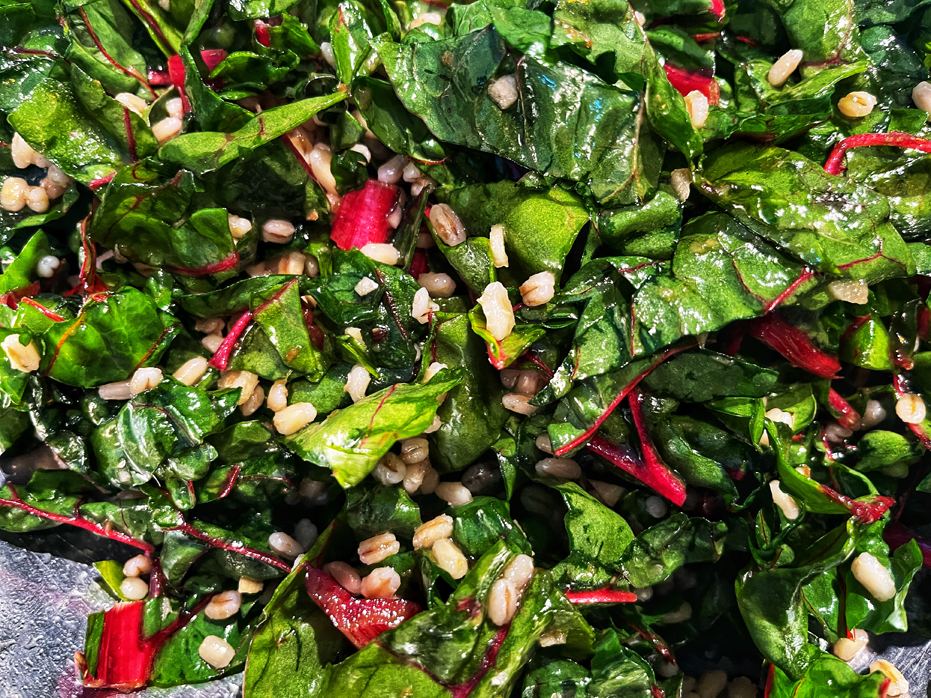
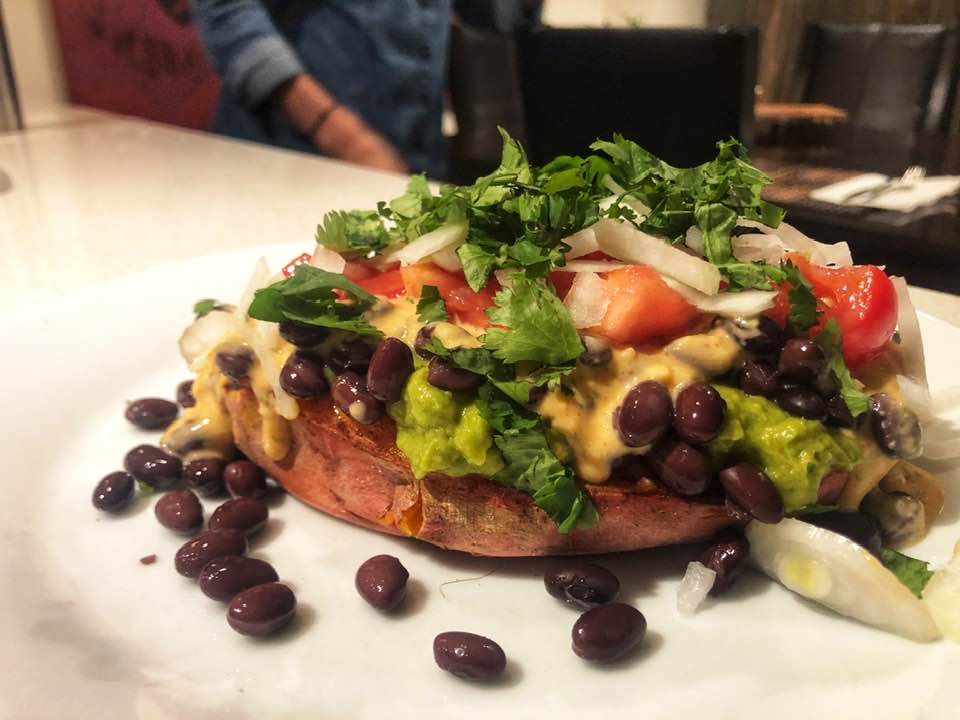

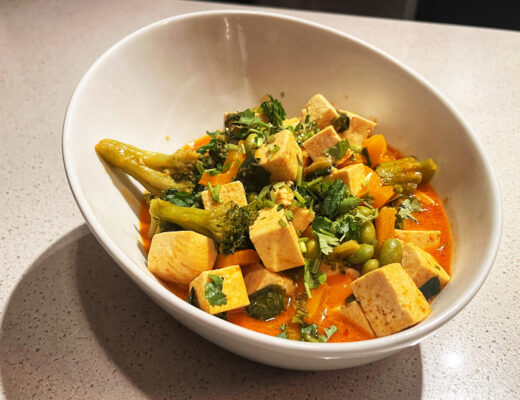
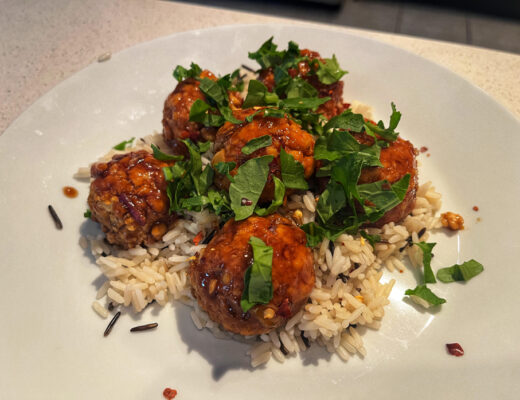
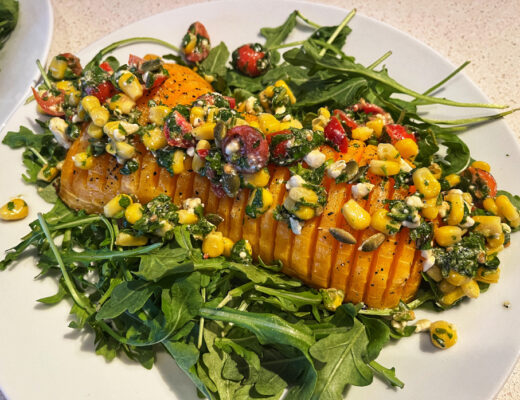
No Comments